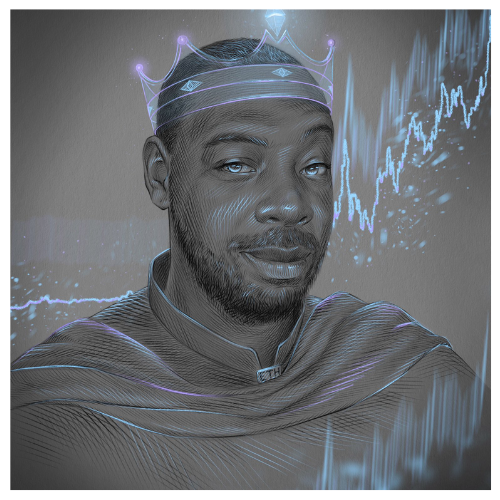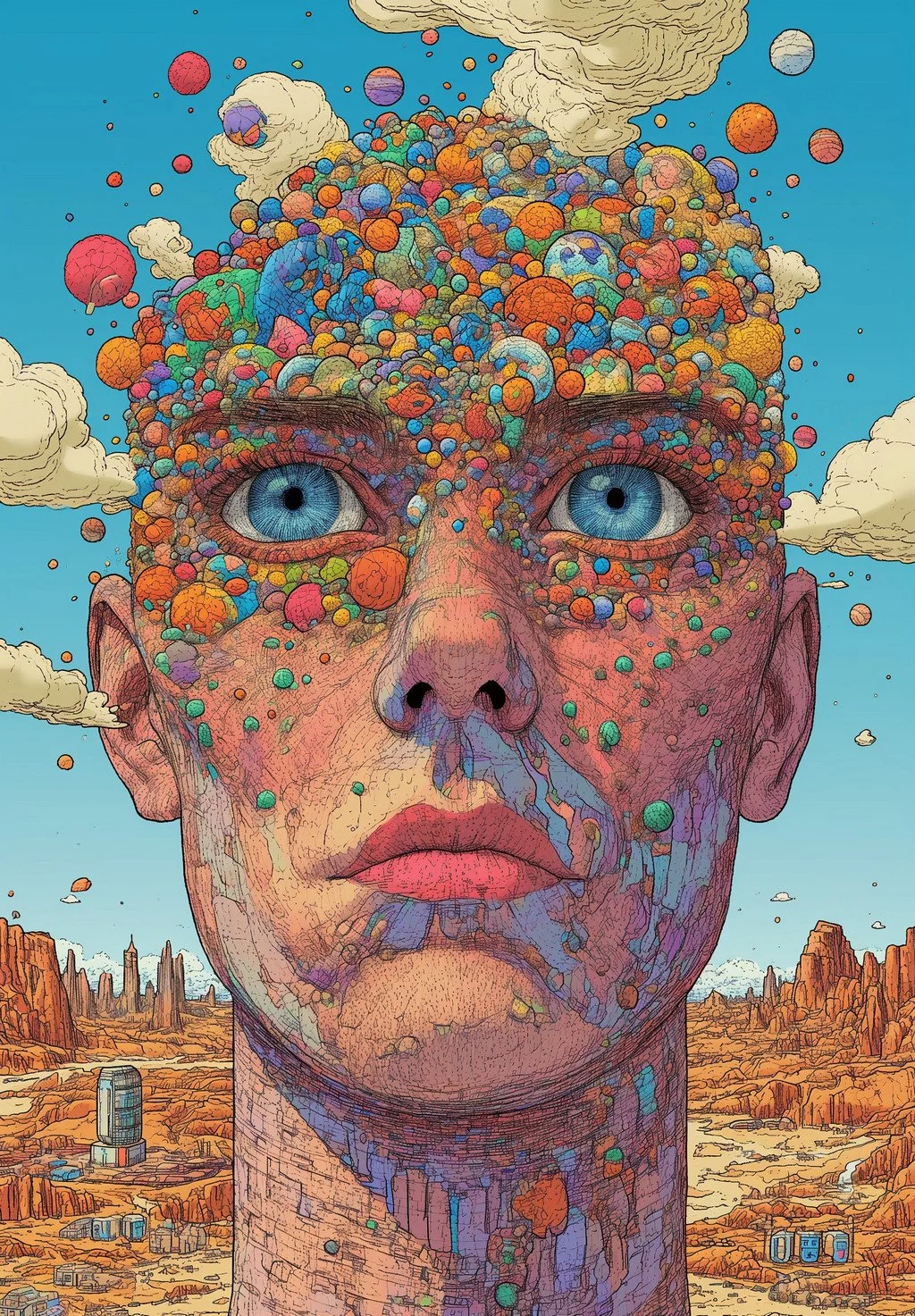Why Does Art Cost So Much?
Greetings Warriors!
Let’s get real—why do some artworks cost so much? We’ve all seen those headlines about paintings selling for millions, and it can leave you wondering, “What’s driving those prices?” Well, the answer is a mix of factors, from the artist's name to the market and even the cultural impact of the piece.
Clever Art Dealer
Let’s spice things up with an intriguing story from the art world—one that ties into why certain artworks cost so much and how marketing strategies (and even a bit of drama) can elevate an artist's value. Enter Paul Durand-Ruel, a visionary art dealer who championed the Impressionists, and one of the most iconic artists of that movement—Claude Monet.
Durand-Ruel wasn’t just an art dealer; he was a master of creating suspense and buzz around his artists. This guy knew how to turn a painter into a superstar, and the story of how he helped Monet’s career skyrocket is legendary. It almost feels like one of those NFT “burning” moments when someone destroys a mint, creating suspense and driving up demand.
In the late 1800s, the Impressionists—artists like Claude Monet, Pierre-Auguste Renoir, and Edgar Degas—were revolutionizing the art world. They broke free from traditional techniques and academic norms, capturing fleeting moments and the play of light in their work. But the problem was, the art world wasn’t feeling them at the time. Their work was criticized, rejected by the establishment, and frankly, wasn’t selling much.
That’s where Paul Durand-Ruel comes in. He believed in the Impressionists and decided to take a huge risk by buying up their work when no one else would. He wasn’t just in it to make a quick buck; he truly appreciated their innovation and potential.
Édouard Manet : January 23, 1832 - April 30, 1883
The Drama: Monet’s “Destroyed” Art
Now, here’s where the story gets juicy. In the late 1880s, Monet’s work was starting to gain traction, but it wasn’t quite the household name it is today. Durand-Ruel, being the clever marketer he was, knew he needed to stir the pot a little to raise the stakes.
So, in 1886, Durand-Ruel arranged an exhibition in New York to showcase Monet’s work. Everything was set—art lovers and potential buyers were buzzing. But, in a surprise move, Durand-Ruel canceled the exhibition. He leaked a story that Monet had destroyed a bunch of his paintings, claiming that the artist was dissatisfied with his own work and had taken drastic action to destroy several of his masterpieces.
This wasn’t just a little side note in the art world—it was drama. It created a sense of suspense, curiosity, and mystery around Monet’s art. People began to wonder: "What was so powerful about Monet’s work that it drove him to destroy some of it? What did the world just lose?"
The Impact: Suspense and Demand Skyrocket
Durand-Ruel’s calculated move had the exact effect he was hoping for. The art world became obsessed with Monet. This buzz generated immense excitement and increased the perceived value of Monet’s remaining works. Collectors started scrambling, realizing they might have missed out on something incredible, and they didn’t want to miss the next opportunity.
When Durand-Ruel rescheduled Monet’s exhibition later, the interest and anticipation had built to a fever pitch. The exhibition turned out to be a massive success, with Monet’s pieces fetching higher prices than ever before. It was like an early version of the strategy we sometimes see in today’s art and even crypto space, where creating scarcity or destroying mints can make the remaining works even more valuable.
The Genius of Paul Durand-Ruel
Durand-Ruel’s approach was bold, to say the least. He understood that it wasn’t just about selling paintings—it was about selling a narrative. By adding an element of suspense and drama, he made Monet’s work more desirable. In essence, Durand-Ruel treated Monet’s art like a precious commodity, knowing that exclusivity and scarcity could drive up prices. He also recognized that the art market was emotional, and a good story could make a painting worth even more.
As a result, Durand-Ruel not only helped to solidify Monet’s place in art history but also helped create a model for how dealers could influence the market value of art. It’s a playbook that’s still being used today, whether it’s in traditional fine art auctions or even the speculative, buzz-driven world of NFTs and contemporary art.
Suzanne Valadon - Nude on the Sofa1920.
Why It Matters: Art Pricing and the Role of Perception
This story highlights a crucial point in the art world: perception is everything. The price of an artwork isn’t just based on the materials, the time, or even the artist’s skill. It’s about the story behind the art, the narrative woven by artists, dealers, and the market. When Durand-Ruel created this story about Monet’s destroyed art, he wasn’t just selling paintings—he was selling a myth, a legend that captivated the imagination of collectors.
It’s the same reason we see such high prices today in the art world. Whether it’s a lost Leonardo da Vinci, a controversial piece by Banksy, or an NFT by Beeple, the value often comes down to the drama, story, and cultural relevance behind the piece. It’s not just about what’s on the canvas or in the code—it’s about the emotional and cultural weight that artwork carries.
Eugene Jansson - Naval Bathhouse 1907
Key Take Aways In Art Prices!
1. The Artist's Reputation
First off, the artist’s name plays a massive role in determining the price. If an artist is well-known and has a history of creating highly sought-after works, their art can sell for millions. Think of artists like Picasso, Basquiat, or Warhol—these names are practically art brands at this point. Collectors see owning their work as an investment, not just in terms of money but in cultural capital.
When it comes to contemporary artists, their prices can also skyrocket if they have major gallery representation, win prestigious awards, or are featured in important exhibitions.
Alexandre Cabanel - The Birth of Venus1863
2. Rarity and Exclusivity
Art is like any other luxury item—the rarer it is, the more valuable it becomes. For instance, if an artist produces only a few pieces a year, that scarcity drives up demand. This is especially true for artists who are no longer alive, because there’s a finite number of their works available. Once an artist like Van Gogh or Monet passes, no more paintings can be made, which means prices will only rise over time.
Even in contemporary art, exclusive limited-edition works, like prints or sculptures that come in small numbers, can command a higher price due to their rarity.
Alexandre Cabanel September 28 ,1823 – January 23, 1889
3. The Market
Art prices are also heavily influenced by the art market, which operates much like the stock market. Auction houses like Sotheby’s and Christie’s are where some of the most expensive art is sold. When big-ticket pieces are auctioned off, bidding wars can push prices into the stratosphere.
Collectors, investors, and even museums bid on these pieces, and sometimes it’s more about winning than anything else. It becomes a status symbol to own a high-priced work, especially one that’s in high demand.
Amedeo Modigliani’s - Nu couché 1917
4. Cultural and Historical Significance
Certain artworks hold a cultural or historical importance that makes them priceless (and, therefore, extremely expensive). Works that define a particular movement—like Da Vinci’s Mona Lisa or Michelangelo’s David—are considered cornerstones of art history. Their value isn’t just in the material used to create them but in what they represent.
Even contemporary pieces that make a significant cultural statement, like Banksy’s politically charged street art, can fetch high prices because of their social relevance.
Waterlilies and Japanese Bridge by Claude Monet, 1899
5. Materials and Craftsmanship
Sometimes, the materials used in the artwork can add to the cost. Pieces made from rare or expensive materials—like gold, diamonds, or precious stones—obviously carry a higher price tag. But it’s not just about the material; the time, skill, and craftsmanship that go into making a piece also matter.
Some artworks, especially in the realm of sculpture or large-scale installations, take months or even years to complete. The artist’s labor, tools, and techniques can all contribute to the final cost.
Pierre-Auguste Renoir - Bather With Blonde Hair 1903
6. Art as Investment
Art has increasingly become seen as a financial investment. Wealthy collectors often buy high-value art not just because they love it, but because it appreciates in value over time. Think of it like real estate or stocks—except, in this case, it’s a Picasso hanging on your wall.
Because art can be resold at a later date for a profit, collectors and investors are willing to pay top dollar upfront, knowing the value will likely rise.
7. Trends and Hype
Finally, trends and hype in the art world can cause prices to skyrocket. If a certain style, movement, or artist is considered "hot" at the moment, demand can surge, pushing up prices. Social media, galleries, and art critics all play a role in this hype machine. The more buzz around an artist, the more people are willing to spend just to get their hands on a piece.
In some cases, this hype can lead to temporary price inflation, where an artist’s work sells for astronomical sums simply because of its trendiness. However, in other cases, the hype can cement an artist’s long-term market value.
Conclusion: Why the High Price?
In short, the cost of an artwork is shaped by a combination of the artist’s reputation, rarity, market dynamics, cultural significance, materials, investment potential, and even trends. It’s not just about what the piece looks like but also about the story behind it and the world of collectors, galleries, and investors that surrounds it.
So, when you see an artwork selling for millions, just know that it’s not just paint on canvas. It’s history, prestige, and sometimes, even cold hard cash wrapped up into one.
Stay creative, Warriors!




















